Valves, Actuators and Regulators for the Entire LNG Value Chain
From startup and commissioning to long-term facility maintenance, Emerson’s LNG valves are trusted by the world’s largest and most complex LNG projects.
Emerson leads the market with the broadest portfolio of valves, actuators, and regulators with critical isolation and control technologies. With a focus on the future, Emerson's solutions harness the power of data-driven innovations to reduce emissions, enhance equipment reliability, and improve plant safety—ultimately driving cost savings and operational excellence.








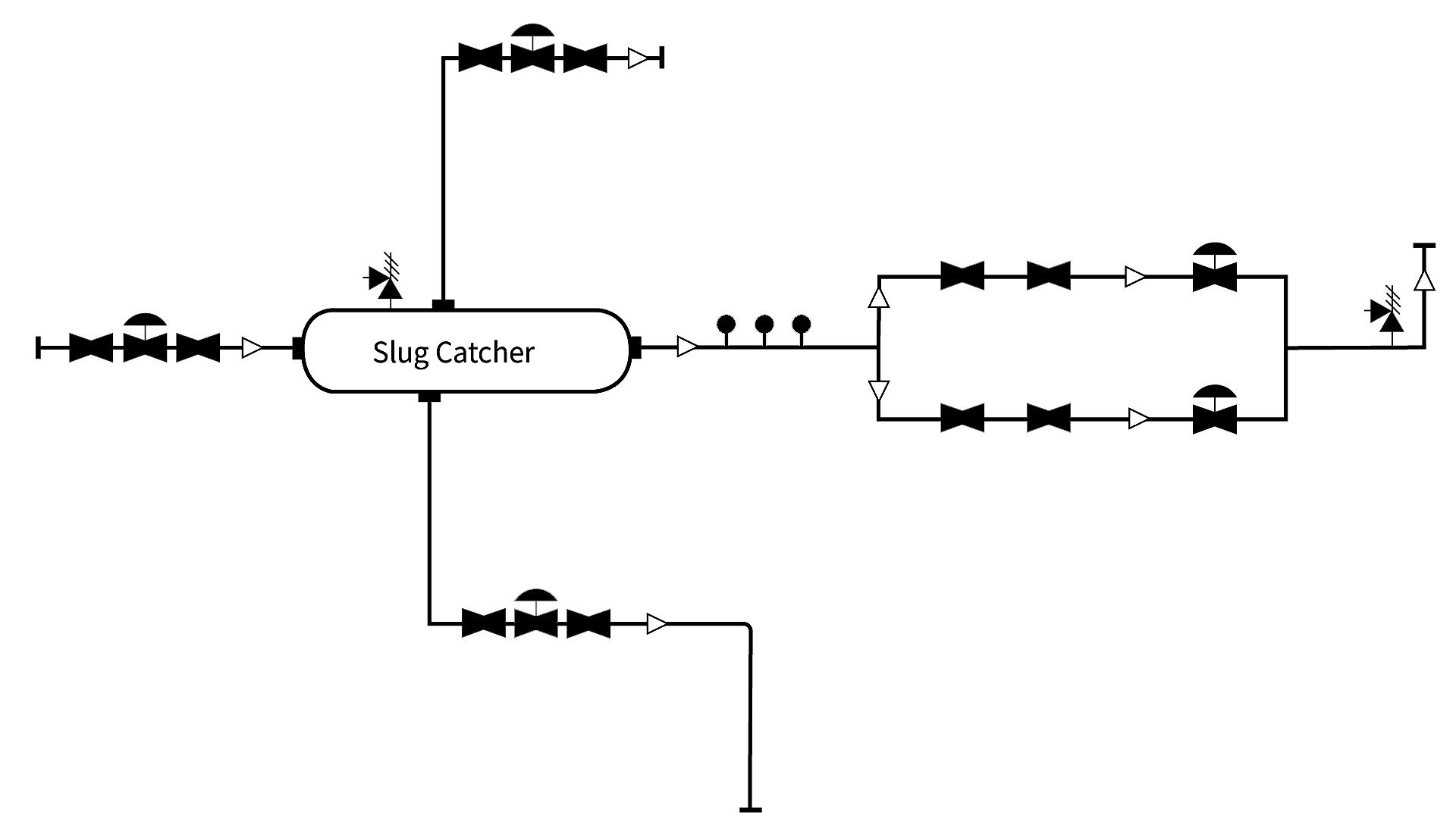
Inlet receiving facilities knock out liquids in the feed gas, reduce pressure from the gas pipeline, and throttle gas flow into the downstream processing units. Stable and reliable operation is crucial for profitable LNG production, as unexpected maintenance or failures can result in significant penalties.
Our value:
Fisher™ Pressure Letdown Valve
Provide the proper rate of flow into the facility.
Fisher™ Slug Catcher Inlet Valve
Provide the final pressure cut before the fluid enters the slug catcher and jump starts the separation
KTM™ Feed Gas Isolation Valves
Isolate feed gas reliably with fully engineered, automated valve solutions.
Anderson Greenwood Pressure Relief Valve
Ensure overpressure protection at the slug catcher without leakage or excess fluid loss.
Vanessa™ Triple Offset Valves for Emergency Systems
Thanks to its non-rubbing quarter turn rotation, Vanessa™ TOV is capable of opening / closing in extremely short times in view of extremely low running torque requirements. The asymmetry of the Vanessa™ TOV triggers different behavior depending on the installation. This increases the reliability of the entire actuated valve solution.
Bettis™ and Biffi™ actuators for Emergency Shutdown functions
Ensure consistently tight shutoff in critical emergency shutdown applications (ESD) with self-contained electro-hydraulic, electric failsafe, and quick-acting solutions.
Fisher™ FIELDVUE™ DVC7K Digital Valve Controller
Analyze data in real-time to evaluate performance and reliability enabling your operation to run closer to setpoint.
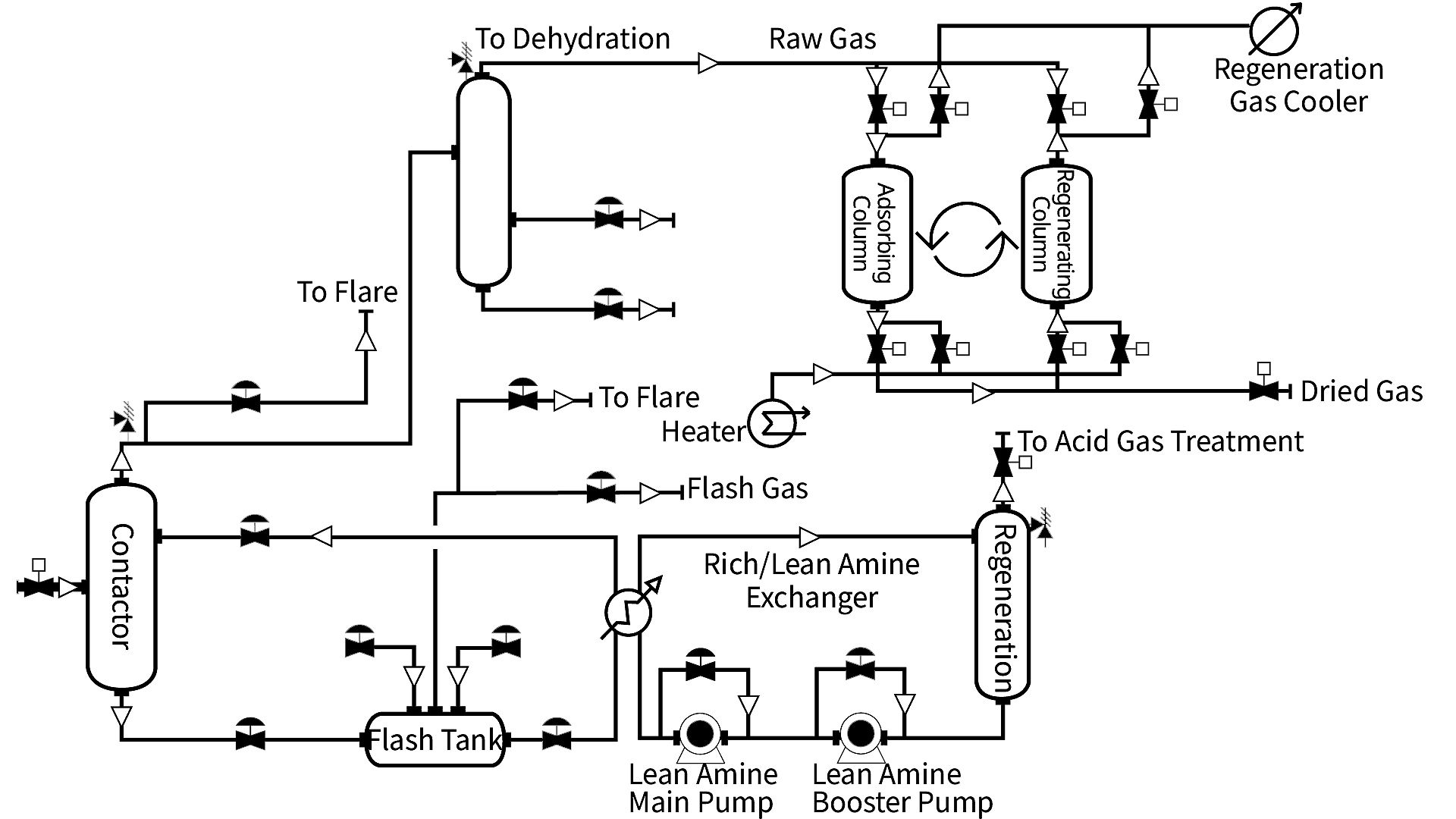
The acid gas removal unit reduces the concentration of hydrogen sulfide (H2S) and carbon dioxide (CO2) present in the feed gas through amine treatment or a sweetening process. The dehydration unit then removes moisture from the sweet gas to avoid dropout and hydrate formation under cryogenic conditions downstream.
Our value:
Fisher™ Rich Amine Letdown Valve
Regulate the level of rich amine solution that accumulates in the bottom of the contactor vessel.
Vanessa™ Triple Offset Valves for Dehydration or Molecular Sieve
Outperform traditional isolation valves with increased durability, reliability, and lower ownership cost.
AEV Dehydration or Molecular Sieve Switching Valves
Revolutionize the way you think about ball valves in the isolation of your severe service processes.
Fisher™ Amine Pump Recycle Valve
Precisely control the pump discharge flow that routes to the suction side of the pump within the acid gas removal unit.
Bettis™ and Biffi™ actuators
Consistently operates in challenging environments, hostile environments, and when power is challenged.
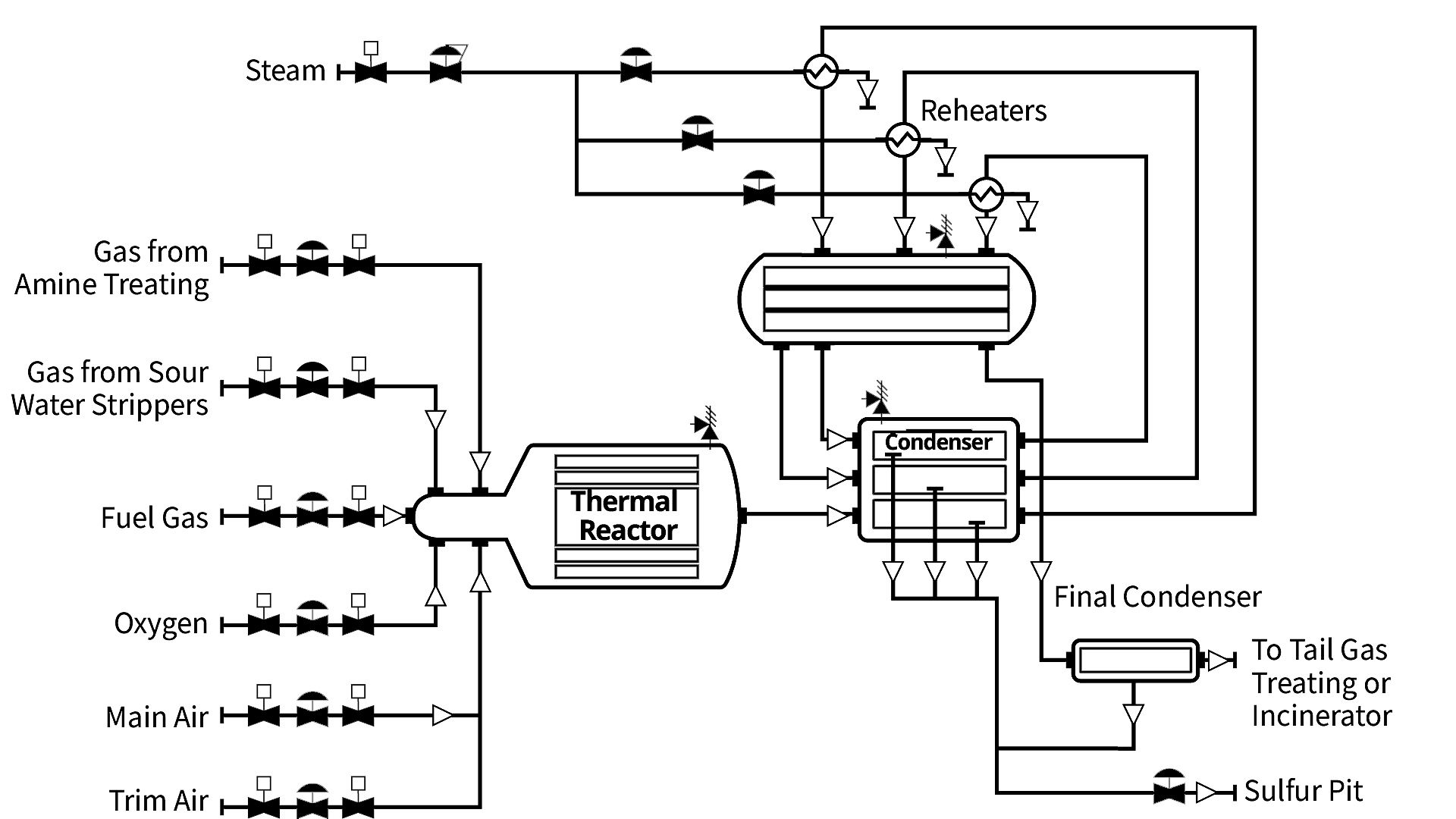
An imbalance of combustion air in sulfur recovery units can lead to an excess of hydrogen sulfide or sulfur dioxide in the tail gas, potentially causing a shutdown of the entire LNG facility. Corrosion presents an ongoing challenge in this context. Furthermore, overall throughput may suffer if the sulfur that is being removed cannot be fully processed.
Our value:
Fisher™ Acid Gas from Amine Valve
Effectively handle highly-sulfuric processes, like bringing acid gas to the thermal reactor, with durable, NACE-compliant materials.
Fisher™ Sour Water System (SWS) Valve
Move sour gas from the sour water strippers efficiently and avoid the costly effects of valve sulfur damage.
Vanessa™ Triple Offset Valves for Sulfur Recovery Unit
On/off or bypass valve solutions featuring a thermal jacket, bearing flushing, and dedicated material selection to protect against thermal loss, medium solidification, and corrosion.
Yarway™ Boiler Trim and Level Solutions
Ensure optimized boiler performance and steam generation by removing sediment, controlling boiler level surge, and managing liquid level.
Crosby Direct Spring Pressure Relief Valve
Protect against overpressure events to avoid process interruptions and reduce risks to personnel.
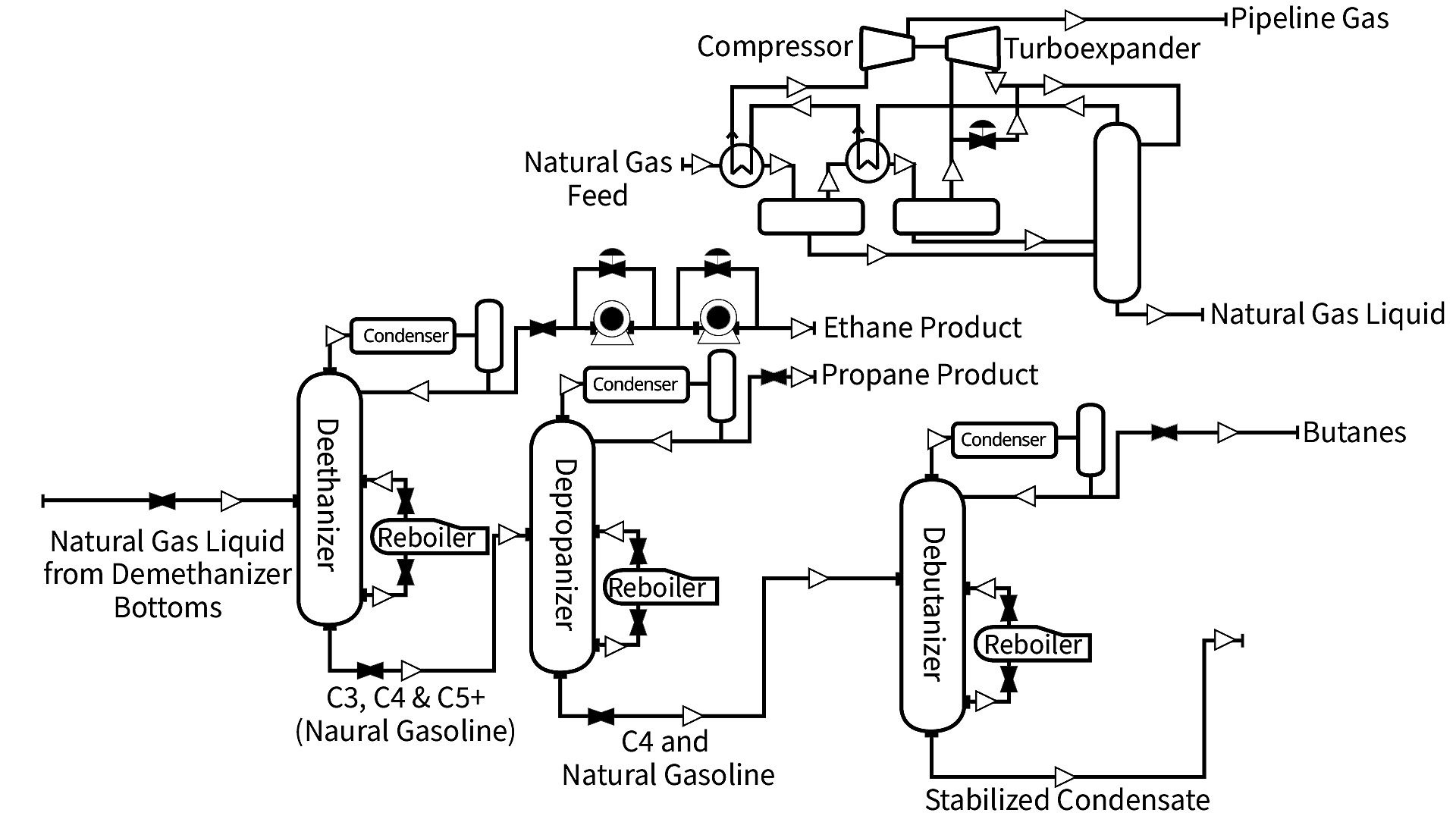
The fractionation process separates a raw stream of mixed natural gas liquids (NGLs) typically consisting of ethane, propane and butane into primary hydrocarbon components. It occurs in stages by boiling off hydrocarbons from the mixed stream and recovering the pure product stream via an overhead condenser, based on regional demand and economics.
Our value:
Fisher™ Booster Pump Recycle Valve
Recycle flow through the ethane booster pump when needed to prevent cavitation damage.
Fisher™ Expander Bypass Valve
Enable an efficient startup and shutdown of the turboexpander and protect it in the event of a system upset.
Vanessa™ Triple Offset Valves
Isolate inlet and outlet lines of the fractionation units with fully engineered, automated isolation solutions.
AEV Isolation Valves
Isolate the reboiler with confidence for scheduled inspection and repair events.
Bettis™ and Biffi™ actuators for Emergency Shutdown functions
Ensure consistently tight shutoff in critical emergency shutdown applications (ESD) with self-contained electro-hydraulic, electric failsafe, and quick-acting solutions.
Fisher™ Overpressure Protection Valve
Shut off the flow of a hazardous gas upon detection of a dangerous event.
Fisher™ FIELDVUE™ DVC7K Digital Valve Controller
Analyze data in real-time to evaluate performance and reliability enabling your operation to run closer to setpoint.
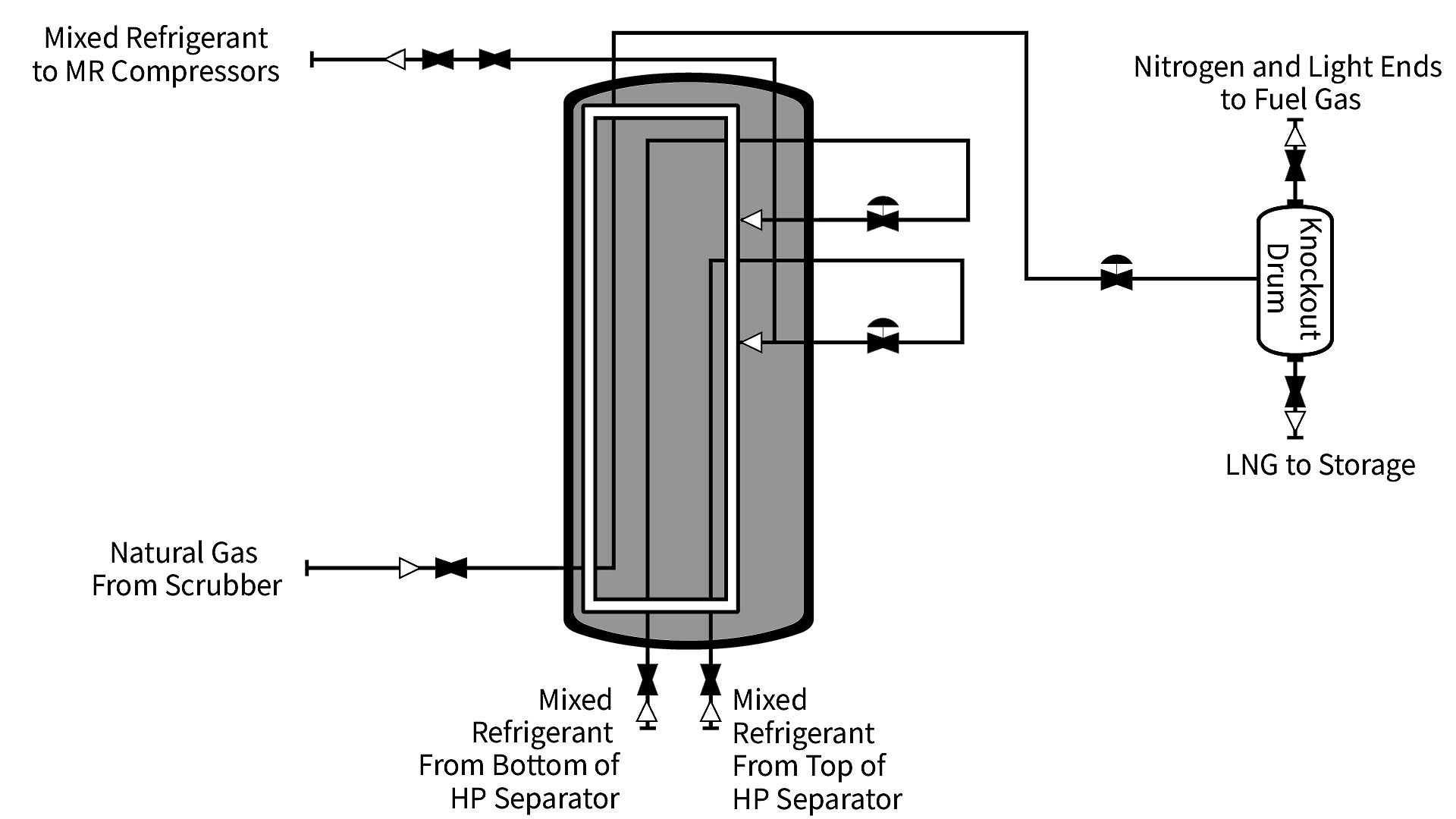
The main cryogenic heat exchanger (MCHE) is the heart of the liquefaction facility. It liquefies natural gas then subcools it. The MCHE is composed of a large number of spiral wound tube bundles. When the feed gas exits the top of the MCHE, it has been turned into liquid as the temperature has been reduced to approximately -146°C (-231°F).
Our value:
Fisher™ Joule-Thomson Valve
Utilize pressure drop to achieve cooling of liquids, gases, or multiphase fluids.
Vanessa™ Triple Offset Valves Cryogenic Configuration
Ensure tightness, operability, and torque demand are unaffected by cryogenic conditions and severe temperature fluctuations.
Fisher™ LNG Temperature Valve
Control the temperature of LNG coming out of the main heat exchanger.
AEV ²XC™ Cryogenic C-Ball Valve
Unrivalled torque seated isolation, with improved safety, reliability, and performance.
Bettis™ and Biffi™ actuators for Emergency Shutdown functions
Ensure consistently tight shutoff in critical emergency shutdown applications (ESD) with electric failsafe and quick-acting solutions.
AEV Automatic Cryogenic Isolation Valves
Ensure consistently tight shutoff despite temperate and pressure changes.
Fisher™ FIELDVUE™ DVC7K Digital Valve Controller
Analyze data in real-time to evaluate performance and reliability enabling your operation to run closer to setpoint.
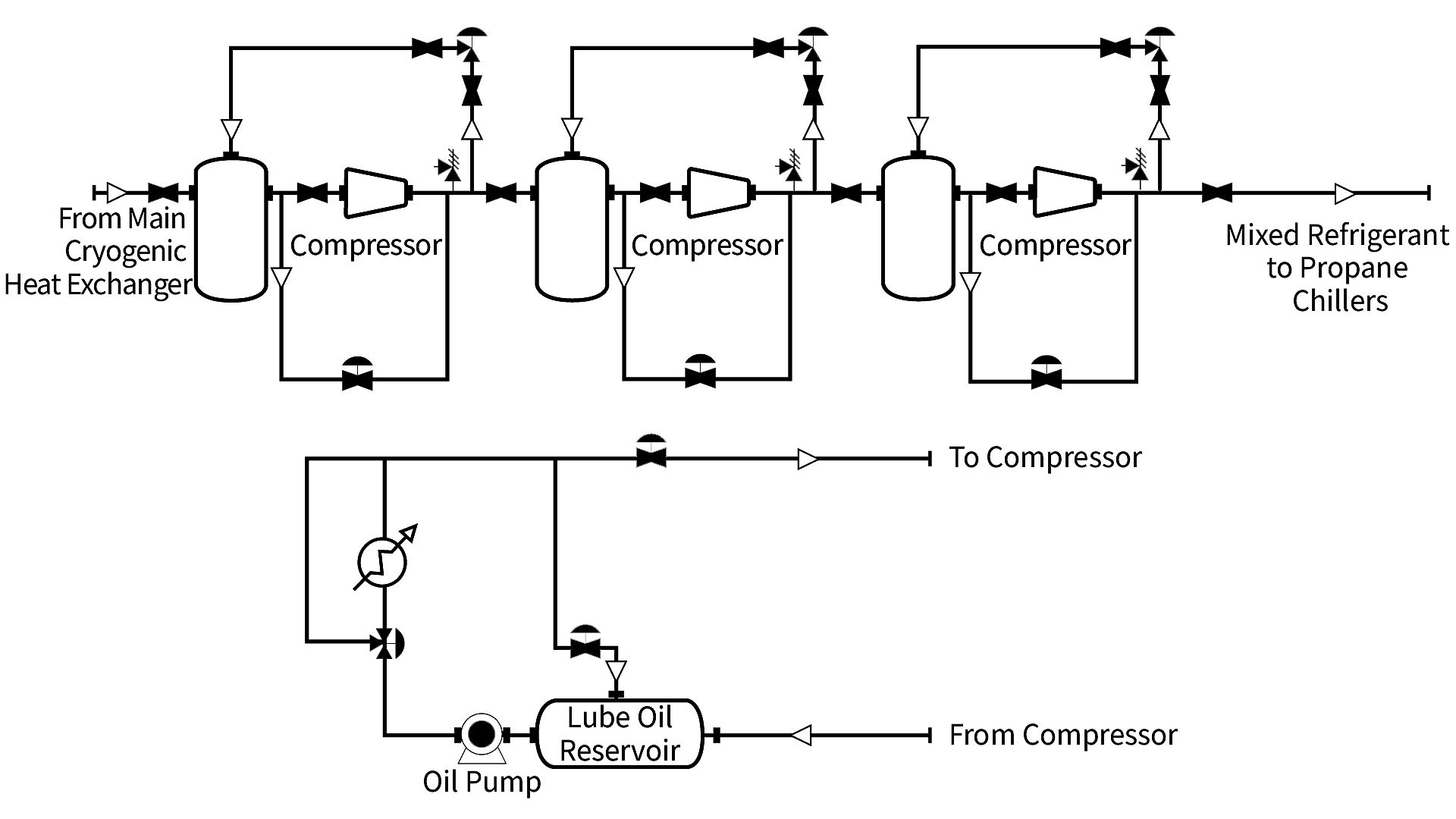
Centrifugal compressors are essential for the gas liquefaction process, providing multi-stage compression of refrigerants to turn natural gas into its liquid state for storage and transport and supporting uninterrupted LNG production.
Our value:
Fisher™ Optimized Compressor Anti-Surge Valve and Accessories
Protect your critical and costly compressor from a damaging surge event with a complete optimized antisurge valve package that provides higher gains, precise response, and remarkable stability.
Fisher™ Hot Bypass Valve
Recycle gas around the entire set of compressors as a safety feature so they won’t shut down.
Fisher™ 3-Way Temperature Valve
Maintain the appropriate temperature of the oil lubricant.
Fisher™ Overpressure Protection Valve
Shut off the flow of a hazardous gas upon detection of a dangerous event.
Anderson Greenwood™ Overpressure Protection Valve
Provide overpressure protection at the compressor outlets with a product designed to minimize nuisance reliefs.
Vanessa™ Triple Offset Valves
Outperform traditional isolation valves with increased durability, reliability, and lower ownership cost.
AEV Automatic Cryogenic Isolation Valves
Ensure consistently tight shutoff despite temperate and pressure changes.
Bettis™ and Biffi™ actuators
Consistently operates in challenging environments, hostile environments, and when power is challenged.

Typically, two or more above-ground tanks are used to receive store LNG. Boil-off gas (BOG) produced in the tanks and LNG lines by heat transfer is compressed and liquefied in a recondenser to avoid flaring or venting and minimize environmental impact.
Our value:
Vanessa™ Triple Offset Valves Cryogenic Configuration
Combine best reduction in footprint and total cost of ownership with superior performances in cryogenic conditions.
Fisher™ Boil-Off Gas Compressor Anti-Surge Valve
Protect the compressor from damaging surge events with quick and accurate valve response to immediately recycle the discharge flow.
Fisher™ LNG Injector
Inject LNG into the gas to cool it.
AEV Automated, Welded Cryogenic Valves
Ensure safe, zero leakage shutoff in challenging jetty operations including isolation, flow modulation, and emergency shutdown.
Anderson Greenwood™ Pressure Relief Valve
Protect the LNG storage tank from overpressure and vacuum scenarios while eliminating leakage during operation.
Enardo™ Detonation Arrestor
Protect against vapor ignition by reducing the temperature and momentum of a flame.
Bettis™ and Biffi™ actuators
Ensure consistently tight shutoff in critical emergency applications with electric failsafe and quick-acting solutions.
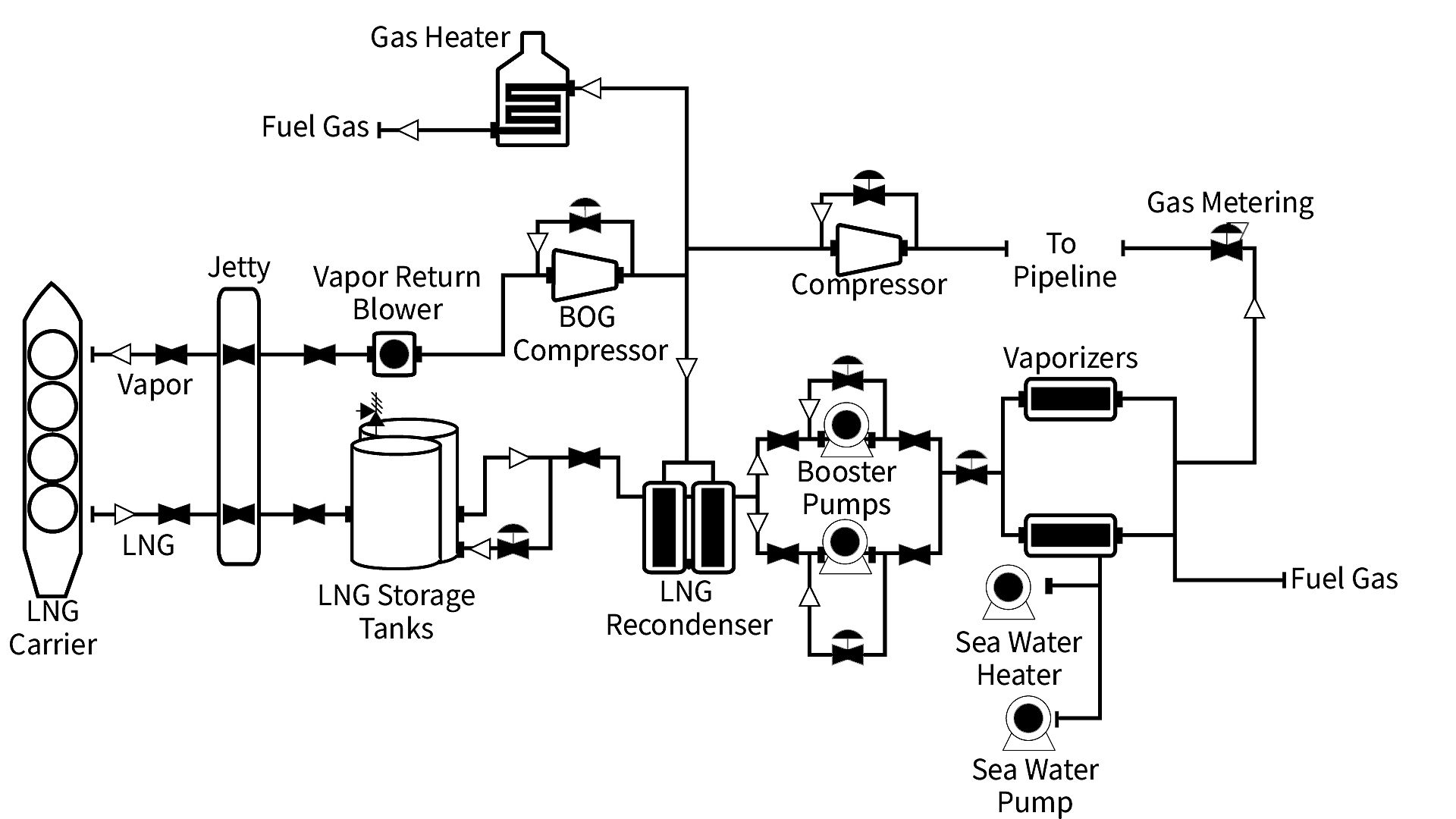
An LNG receiving terminal is where vessels are unloaded and where large insulated holding tanks are used to keep the LNG at atmospheric temperature. A vaporization system is used to turn the LNG back into a gaseous state before it is distributed through a natural gas pipeline system.
Our value:
Vanessa™ Triple Offset Valves Cryogenic Configuration
Ensure tightness, operability, and torque demand are unaffected by cryogenic conditions and severe temperature fluctuations.
AEV Unloading Arm Valve
Minimize the total installed cost of unloading arms with zero leakage cryogenic valves optimized for space and weight.
Keystone Seawater Isolation Valves
Achieve long life, intelligent, automated isolation in corrosive seawater applications.
Fisher™ Compressor Anti-Surge Valve
Protect the compressor from damaging surge events with quick and accurate valve response to immediately recycle the discharge flow.
Anderson Greenwood Pressure Relief Valve
Reduce vessel penetrations, product waste, and maintenance costs.
Enardo™ Detonation Arrestor
Protect against vapor ignition by reducing the temperature and momentum of a flame.
Injection Station
Inject regasified LNG into the natural gas network with pressure reducing and metering stations.
Bettis™ and Biffi™ actuators
Ensure safe shutoff in challenging operations. Achieve long life, intelligent, automated isolation in corrosive seawater applications.
Are you launching a new LNG project or facing challenges with your LNG valve maintenance? Emerson offers proven, innovative solutions to enhance your operation’s throughput, safety, and emissions management. Let us know your questions or concerns, and we’ll connect you with one of our LNG valve experts.
Frequently Asked Questions About LNG Valves
LNG valves are essential for maintaining safety in LNG plants because liquefied natural gas, whether methane, ethane, propane, or butane, is highly flammable. Properly functioning valves are crucial for preventing leaks, controlling pressure, and managing emergency situations, thus mitigating critical safety risks.
Since the introduction of LNG plants in the 1930s, LNG valves have evolved to handle significantly larger liquefaction trains. Valve manufacturers now focus on producing larger-sized valves that can accommodate high pressures and ensure safe pressure control, isolation, and emergency operations in response to the growing global demand for LNG.
One of the key challenges for LNG valve manufacturers is developing valves that can handle large sizes and high pressures. These valves are essential for process control, isolation, emergency operations, and protecting major equipment in LNG plants, where safety is a critical concern. Emerson is highly experienced with producing valves that support the entire LNG value chain – including, liquefaction facilities, carriers, and regasification terminals.
Valves play an essential role in LNG infrastructure by facilitating equipment isolation for maintenance, process on/off, regulation/control, and emergency shutdowns. Proper valve technology selection and configuration is critical to ensure safe, sustainable and profitable operations. Emerson offers a vast portfolio of manual and actuated valves for LNG, covering the entire production chain and distribution.
LNG valves in on/off configurations can be actuated using pneumatic, electric, or hydraulic systems. These actuation options allow the valves to be automatically controlled, ensuring that LNG processes are efficiently managed and that the valves can respond quickly to changes in operating conditions.